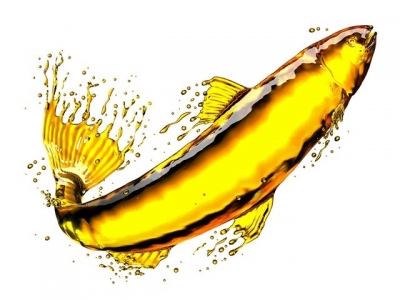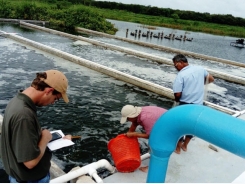Fish oil alternatives are waiting in the wings

New F3 oils challenge aims to accelerate development, adoption of critical aquafeed substitute
Aquaculture needs oil. That’s the long and short of it.
Not oil of the “black gold” fossil fuel variety, and not even fish oil. The oil that aquaculture must get its hands on – and fast – has very similar properties and benefits to that most traditional of aquafeed ingredients, but is also abundant and affordable. Unfortunately, finding such a feed ingredient, or ingredients, is literally proving quite the challenge.
A major source of the omega-3 fatty acids eicosapentaenoic acid (EPA) and docosahexaenoic acid (DHA), which are essential for many human health and development functions, fish oil is a finite resource that is volatile in volume. Crucially, it’s coveted across the food and health sectors for application in multiple products, which in turn has propelled prices upward.
Aquafeed producers have been steadily lowering the fish oil content in their feeds to conserve the resource, while also scrambling to establish viable alternatives. A handful of potential substitutes have emerged, but none have been both cost-effective and widely available.
Michael Tlusty, Ph.D., associate professor of sustainability and food solutions at the School for the Environment, University of Massachusetts, sums up the situation, telling the Advocate that when it comes to creating nutritionally equivalent substitutes for marine ingredients, we are still at the beginning of the journey, with oil alternatives much less forthcoming than fishmeal replacements.
“There have been some great solutions, such as the Verlasso DHA yeast [genetically modified to produce omega-3s], but these are by far not filling the demand for alternatives. And the clock is ticking,” he said.
Essential fats
The Future of Fish Feed (F3) initiative aims to jumpstart innovation in terms of viable fish-free substitutes to fish oil through the global F3 Fish Oil Challenge. This competition is the brainchild of Kevin Fitzsimmons, professor at the University of Arizona, who alongside Tlusty and the other F3 partners maintains that aquaculture faces a marine ingredient bottleneck. If it is to circumvent that and continue to expand, it will need to develop reliable, alternative ingredients.
“The question is, ‘Where are we going to find these alternatives?’” asked Fitzsimmons. “Lately, we have been able to use such things as vegetable and some animal oils, as well as poultry byproducts, but the problem with those is that we really don’t want to move away from the long-chain polyunsaturated fatty acids – the omega-3s – that are so critical. So, while there is nothing wrong with people using these other oils, we want to find something that is a better substitute for fish oil.”
Consequently, to qualify for the competition and to be in with a shot for the $100,000 prize, a key criterion is to meet certain levels of omega-3 (both EPA and DHA) and omega-6 content.
“All three of these fatty acids are critical for human health and it’s really important that we keep these in our diet from eating seafood. We don’t want people making seafood that doesn’t have all the natural health benefits that we desire as consumers,” said Fitzsimmons.
Because the omega-3 oils originate with algae that is bioaccumulated up through the food chain, the first and largest tranche of innovations have been algae-based. So far, though, most have proved expensive and not of sufficiently large scale to meet the feed producers’ expectations.
Nevertheless, with fish oil prices ascending , there is momentum building behind production of omega-3 oil alternatives formulated from black soldier flies fed with fish waste from processing systems, as well as from genetically modified soybean and canola crops.
Complex challenge
The fish oil competition is not the first time the F3 team has challenged the aquaculture sector to develop alternative feed ingredients. A 16-month contest to develop and sell the most fish-free feed concluded at the Global Aquaculture Alliance’s GOAL 2017 conference in Dublin last October. The winner, Guangdong Evergreen Feed Industry Co., which sold more than 84,000 metric tons (MT) of fish feed, is back to try and take the oil title with a plant-based tilapia feed called 107A.
I really like what the F3 people believe in and what they are trying to achieve. They are creating a critical mass around this whole movement and I want to be part of that.
The diet is Evergreen’s latest innovation from nearly 10 years working in this space and was developed specifically to reduce the cost of feed for fish farmers while not impacting fish growth or performance.
The company also said the F3 challenge is important as it “demonstrates the power of Evergreen’s scientific research” and illustrates “the development of China’s aquatic feeds in becoming more environmentally friendly and efficient.”
Registration for the competition closed on 30 April and by 30 November the 10 entrants must submit an F3 oil sample. The final quarterly sales report must be submitted by 15 September 2019, which then closes the contest.
Changing the mindset
Because there are limited sources of long-chain fatty acids outside of algae and the fish that bioaccumulated it, it is inherently much more difficult to come up with a fish oil substitute than it is replacement proteins for fishmeal. Far from impossible, however.
“One of the things that we keep trying to remind people – feed formulators, fish and shrimp farmers and to a lesser extent the general public – is that it’s not the ingredient that’s so important, it’s the nutrients. We’ll be perfectly healthy as long as we get the right mix of amino acids and other micronutrients that fish oil and fishmeal provide,” Fitzsimmons explained.
“Replacing them from other sources is going to be more complicated, whereby instead of one ingredient you might need seven to get the same basic nutrients that we know the animal needs and that we want to ensure are there for the eventual consumer. There are ingredients like flaxseed and walnuts as well as other ways of bioaccumulating, so while it’s more complicated, there are a lot of people on it and there’s a lot of money to be made.”
TwoXSea Formulation is another plant-based entry, with a world-first solution for carnivorous fish. The product has been in development since 2009, but Kenny Belov, co-owner of TwoXSea and the California-based McFarland Springs Trout Farms, said the breakthrough moment came two years later when the laboratory revealed that the DHA levels in his fish were higher than that of wild salmon.
“In essence, our trout had become a superfood,” said Belov. “With no bioaccumulation of toxic ingredients found in the wild, our trout became something completely unique. By purposely tuning the levels of key ingredients, the fish becomes a vessel for perfect nutrition.”
Belov maintains that his solution could ensure aquaculture’s future.
“The current practice in aquaculture is to use the cheapest possible ingredients to make the most money as possible,” he said. “This is a dead end, as those ingredients are being depleted at a staggering rate. Creating a land-based diet allows for a future in this industry, as well as creating jobs and a far more healthful product to eat.”
Nurturing innovation
As it did with the fish-free feed challenge, F3 will invite all of the oil contestants to San Francisco, California, in February 2019, where they will meet and present their innovations to a group of aquafeed companies and fish producers. Joining them will be a number of prospective investors.
“Silicon Valley was such as rewarding experience for all those involved in the last competition, so we are going to try and capture that lightning in a bottle again,” said Fitzsimmons.
“Our goal is to get that buzz; get these people talking to one another and try to speed up this innovation because there are a lot of great ideas out there. In fact, I don’t think there are any losers in this contest. All these people have brilliant ideas and we want to encourage them as much as possible and let the free market decide what is going to work for individual customers.”
The F3 challenge has been instrumental in creating a discussion about the future opportunities for feeding aquaculture, as well as bringing “natural synergies” between contestants that might not have otherwise formed, while the associated meeting in San Francisco provides a very valuable opportunity to bring together those people working at the forefront of this space, added Tlusty.
“Innovation is important and anything we can do to shine a spotlight on the current work is much needed,” he said.
Another entrant from both competitions, U.K.-based Aquaculture Innovation, has really bought into the whole F3 philosophy, said the company’s CEO Sunil Kadri.
“I really like what the F3 people believe in and what they are trying to achieve. They are creating a critical mass around this whole movement and I want to be part of that,” Kadri said. “And from a commercial standpoint, the situation where fish oil would become this incredibly valuable and sought-after product was predicted more than 10 years ago, but the price back then wasn’t driving the development of alternatives as much as it is today.”
Consequently, the production of various algae and GM crop oils are scaling up and “progressing nicely,” he said, while the broader aquaculture industry – particularly salmonid growers and producers of other species, feed and feed additive companies – is getting increasingly engaged in this progress and “very keen” to see these innovations come through.
F3’s next project, a Feed Innovation Network, will provide more education and demonstration around the world about how these different products and innovations can fit into aquaculture diets.
Expected to comprise an online presence and a series of demonstration farms, the network’s initial focus will be Asia, which Fitzsimmons said is “not getting the word quickly enough” – a far from ideal situation, considering that it is home to around 80 percent of all the world’s aquaculture production.
Conversations are ongoing with stakeholders in China, Thailand, Vietnam and Burma, as well as in the United States and Europe, and the intention is to roll it out for a variety of species.
Có thể bạn quan tâm
Phần mềm

Phối trộn thức ăn chăn nuôi

Pha dung dịch thủy canh

Định mức cho tôm ăn

Phối trộn phân bón NPK

Xác định tỷ lệ tôm sống

Chuyển đổi đơn vị phân bón

Xác định công suất sục khí

Chuyển đổi đơn vị tôm

Tính diện tích nhà kính

Tính thể tích ao hồ




 A look at phospholipids in aquafeeds
A look at phospholipids in aquafeeds  Commercial demonstration of in-pond raceways
Commercial demonstration of in-pond raceways